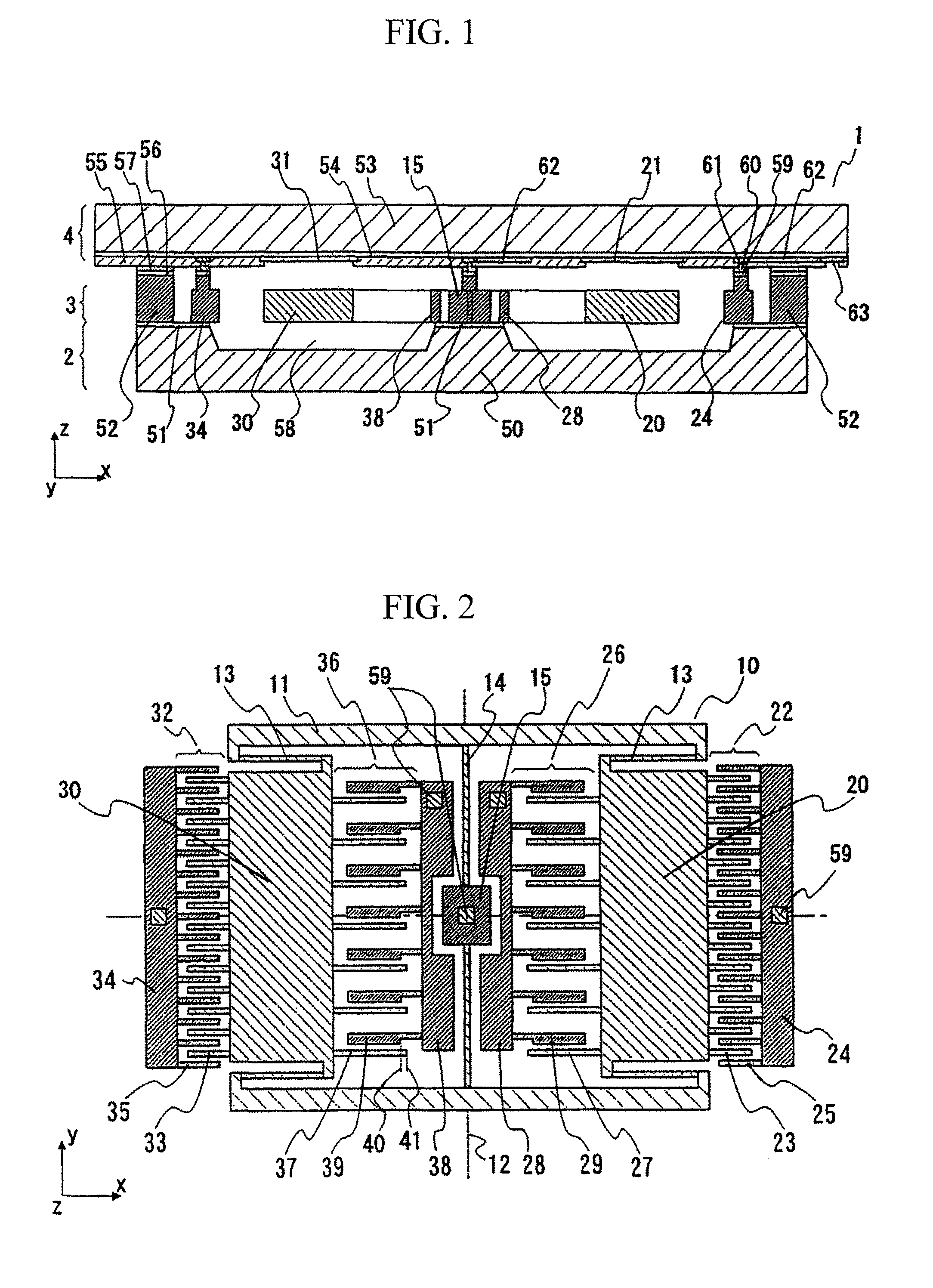Angular rate sensor
a technology of angular rate and sensor, which is applied in the direction of acceleration measurement using interia forces, turn-sensitive devices, instruments, etc., can solve the problems of not always being able to utilize the entire coriolis force component as the detected vibration torque, and it is difficult to align the resonant frequency between the two oscillators. , to achieve the effect of increasing the detected vibration, reducing noise, and large vibration
- Summary
- Abstract
- Description
- Claims
- Application Information
AI Technical Summary
Benefits of technology
Problems solved by technology
Method used
Image
Examples
Embodiment Construction
[0023] The preferred embodiments of the present invention will be described below with reference to the accompanying drawings. It is to be noted that the same reference numerals designated in the drawings for the embodiments indicate identical or equivalent constituents.
[0024] An angular rate sensor according to a first embodiment of the present invention will be described with reference to FIGS. 1 to 3. FIG. 1 is a cross-sectional view of this embodiment, and FIG. 2 is a schematic plan view of an element substrate of this embodiment.
[0025] As shown in FIG. 1, an angular rate sensor 1 of this embodiment includes three layers of a support substrate 2, an element substrate 3 and a wiring substrate 4. A movable portion of the sensor is formed inside the element substrate 3, and the structure inside the element substrate 3 includes a portion bonded and fixed to the support substrate 2, and another portion separated from the support substrate 2 and displaceably supported inside the ele...
PUM
 Login to View More
Login to View More Abstract
Description
Claims
Application Information
 Login to View More
Login to View More - R&D
- Intellectual Property
- Life Sciences
- Materials
- Tech Scout
- Unparalleled Data Quality
- Higher Quality Content
- 60% Fewer Hallucinations
Browse by: Latest US Patents, China's latest patents, Technical Efficacy Thesaurus, Application Domain, Technology Topic, Popular Technical Reports.
© 2025 PatSnap. All rights reserved.Legal|Privacy policy|Modern Slavery Act Transparency Statement|Sitemap|About US| Contact US: help@patsnap.com



